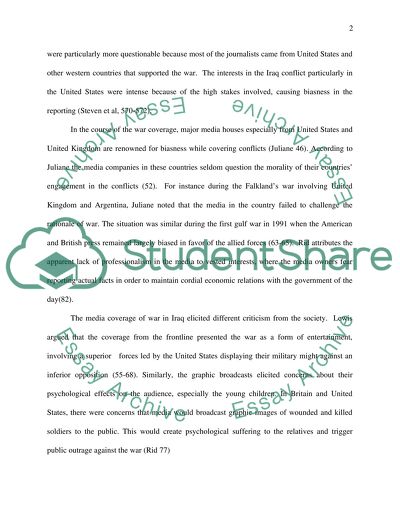Cite this document
(“Media Coverage of War Research Paper Example | Topics and Well Written Essays - 2500 words”, n.d.)
Media Coverage of War Research Paper Example | Topics and Well Written Essays - 2500 words. Retrieved from https://studentshare.org/journalism-communication/1399821-media-coverage-of-war
Media Coverage of War Research Paper Example | Topics and Well Written Essays - 2500 words. Retrieved from https://studentshare.org/journalism-communication/1399821-media-coverage-of-war
(Media Coverage of War Research Paper Example | Topics and Well Written Essays - 2500 Words)
Media Coverage of War Research Paper Example | Topics and Well Written Essays - 2500 Words. https://studentshare.org/journalism-communication/1399821-media-coverage-of-war.
Media Coverage of War Research Paper Example | Topics and Well Written Essays - 2500 Words. https://studentshare.org/journalism-communication/1399821-media-coverage-of-war.
“Media Coverage of War Research Paper Example | Topics and Well Written Essays - 2500 Words”, n.d. https://studentshare.org/journalism-communication/1399821-media-coverage-of-war.


